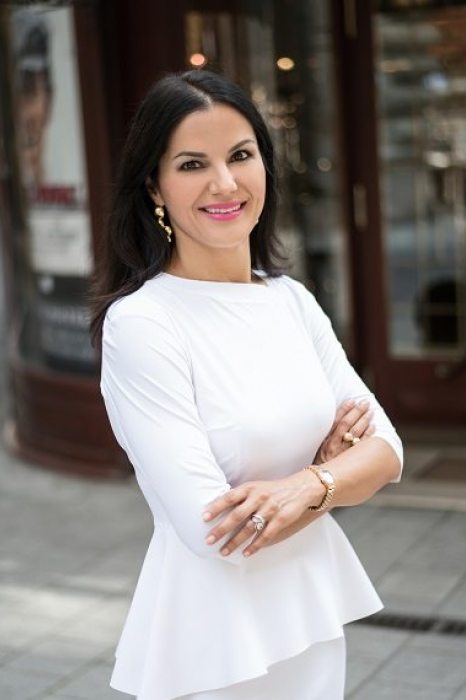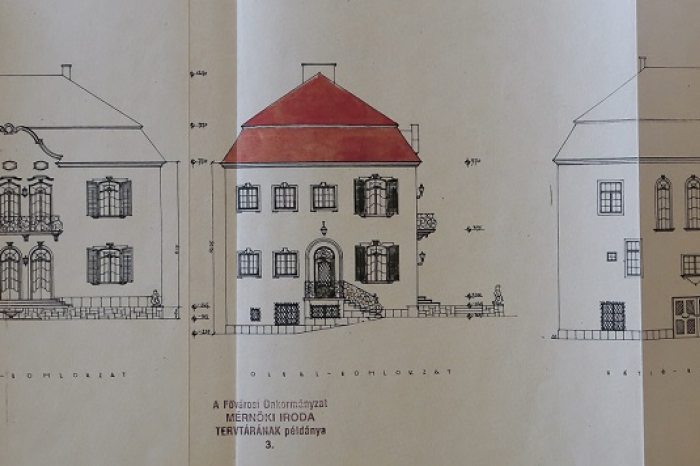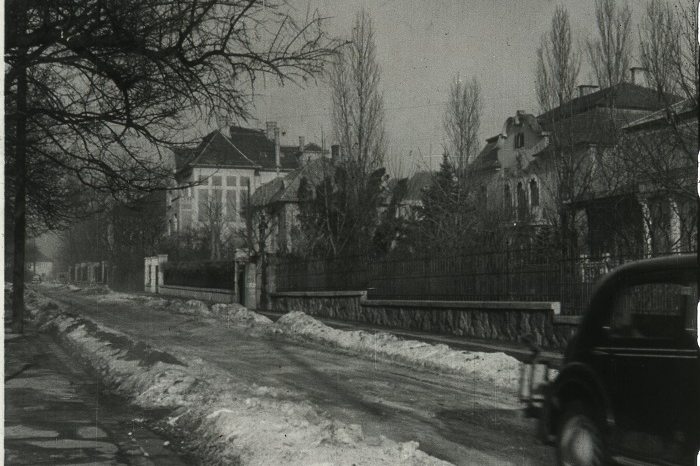“I really need the 90 minutes driving between Almádi, or more precisely Vörösberény, and Budapest. There’s no bustle around me, I have time to consider the day and my important matters,” says Mónika in the car while driving from the railway station to their home. We move from the spacious living room into the back garden where we settle in the comfy terrace tucked away from the street. Miklós starts their shared story, which begins at the JATE club on a sociology course in Szeged.
Miklós: “She was humanities, I was law. Later, professor Katona romantically put it like this: love started as they bent over the notes. Of course, life is not only about romance; if a person wants to achieve something, the task must be determined precisely. When I met my wife I saw: this woman is absolutely great, she looks attractive, she is reliable and very smart. I began to believe that she could be the mother of my children, I began to weigh up what God could ask of me, we defined the framework in which our common mission could be realized. Of course, a person thinks through decisions rationally but does not necessarily finalize them rationally.”
When you were planning, did you have in mind a large family?
Mónika: “Right from the first moment we knew we wanted four children.”
Miklós: “I had two siblings, but Mónika was an only child.”
So you needed courage for this…
Miklós: “My wife is an extremely courageous woman.”
Mónika: “When a person lives in a family as a well brought-up little girl all by herself, everything is predictable, organized, perhaps a little boring. This also means that if one has to go somewhere at 5 o’clock, then at five there is no need to be chasing two other family members around the house. At the beginning I didn’t understand this, I was highly inflexible. Today, I accept that Udvarhelyi timekeeping must be interpreted with a little slippage. But for a long time I had a sense of shame that we were late for everything.”
How did the plans for four children impact on Mónika’s professional concepts? In fact, how did you even go into science?
Mónika: I graduated in the communication class that started before the passage of the first media law. We hadn’t yet envisaged our future in tabloid media. In the happiness of the years after the change of regime we were thinking in terms of public service investigative journalism, a BBC-type model. It is no coincidence that of those couple of years very few of us stayed in the profession since I, too, was unable to identify with the opportunities outlined by the commercial channels. We prepared for a classic, gatekeeper role watching over authority – of course, looking back there was something naïve in this, but we had just come out of a dictatorial system.
“When I started my career, I also saw that it was not possible to do this profession with a big family, and I preferred to have a big family rather than a career in journalism or TV. In the meantime, I saw how much more there was in media and communication science than what we had learned with regard to journalism. When I graduated, this was exactly when Özséb Horányi launched the doctoral course, which is how I could continue at Pécs without missing a year.”
Did you plan to do your scientific work at home as well, for example at night when the children slept?
Mónika: “No. It is an interesting biological problem that I have an iron deficiency so I go to bed latest at 9.30 pm.”
Miklós: “On the other hand, I don’t have iron deficiency…”
Mónika: “He can stay up until two in the morning. This is why it is difficult for us to organize evening programmes. I think most parents with young children will be disappointed when they plan that they will work when the children are sleeping because they will also be exhausted by then. Once, while I was washing and hanging up curtains, when the older children were two or three years old, it came to me that I would never have more time. Either I manage what I can from the time available or my dreams must be let go. Very many women, as I am, too, are mother hen-type mothers…”
Miklós: “But that’s why I married you!” (laughs)
Mónika: “Miklós had to virtually prise me out of the mother role in which I lived and enjoyed in order to start on a career.”
Miklós: “We had plans but we didn’t plan everything ahead although we never wanted to subordinate the concepts of the other to our own dream. I studied abroad doing half-terms.”
It cannot have been easy to stay at home with young children.
Mónika: “It’s not so easy. The whole rearing of children is not easy. At the university, I got used to writing a paper and then I had the result and feedback. At the beginning, it was shocking that with bringing up children the feedback comes 5-10 years later. My girlfriend said that at the beginning one is simply pleased to keep just their metabolism in order.
“Naturally I had moments of despair. There was very little age difference between the first two children, I couldn’t imagine what the older one was doing while I bathed the smaller one. However, this feeling of ‘how bad, how difficult this is for me now’ very easily becomes a spiral that pulls one down. Miklós is very good at sensing all this from non-verbal signals and he can immediately drag me back. Because, of course, just like the majority of women, I also sulked and wouldn’t say what my problem was, I was waiting for him to find out. He taught me to name these and it is very important that he never swept these aside as minor annoyances not worth dealing with.”
Did you always trust each other when you were parted?
Mónika: “Before we got married, Miklós lived in Finland and once a woman from Finland turned up. Then I understood why, although he travelled a lot and took me to several places, he didn’t take me there. Or for example, he was walking through the streets in Italy sighing Marietta, Marietta… But we talked this over with a good deal of humour. Obviously, in women there is always this little devil on the shoulder whispering that while I am here in the evening putting the children to bed, who knows what he was doing… Of course, if you are unsettled you can ask, but we never went beyond the critical level of suspicion.”
Miklós: “We have a friend who travelled to London on business but came back suspiciously tanned. In our relationships there is a good degree of freedom, there is no constant control, we don’t call each other every hour checking up.”
Mónika: “It is also worth watching how a man reacts to attractive women in the immediate environment because that says a lot about a relationship. For us, it helps a lot that we are genuinely pleased for each other’s success, even if that means a lot of travel. Miklós gives me impetus, which needs…”
Miklós: “…a lot of iron…”
Mónika: “…yes, that too, and that he should know me and see my objectives because he can assess situations, chances better from outside. Sometimes a person is not satisfied with him/herself and women are anyway more critical of themselves.”
Isn’t this the courage of a kibitzer?
Mónika: “He is not a kibitzer in my life but rather a manager who gives impetus at the right time because he always helps. When, for example, before flying I imagine the airport at Kuala Lumpur and, as I wander about, that I will be dragged into a sheik’s harem – if not as a wife because I’m not that young any more, but as a nanny – all he said was that I should know that these days many girls depart, for example to Dubai, and they all arrive safely. When the children are young it is obvious that the husband can travel and work more, but there is an unspoken vow that the wife’s moment will also come. That we will create the opportunity for the wife’s vocation and success as well, but many marriages cannot wait for that time.”
Miklós: “If we are alone, we worry, if we are not alone, we do not worry, then frequently we worry if we are not alone, but still the range of tasks is the same and the frames do not change. If one bears all this in mind, then one cannot go far wrong.”
You have worked all this out as a relationship between two contracting partners.
Miklós: “I knew that if we had a joint task in life, it was my obligation to constantly pay attention to my partner’s happiness. To the fact that she is happy today and tomorrow as well, even if something different is needed tomorrow than today.”
Mónika: “It is true, Miklós asks me every other day whether I am happy, if not always using these words. When he does, I can tell him even the smallest problems, for example, that the coffee machine has broken down and it needs repairing, and I also speak of anything that makes me deeply anxious.”
Miklós: “It was clear from the first minute that one has to step up to the plate first and not wait for the other. One has to take into account one’s own responsibilities first.”
Is there room for romance in all this?
Mónika: “We are both extremely busy so sometimes we meet in hotels and restaurants. When I say that my husband is also arriving, a shadow of a smile flits across the face of the receptionist. These little winks bring the vigour of youth back into our relationship.”
With the Balaton so close, are you on holiday all summer?
Mónika: Rather we have people who come for holidays. My girlfriend often jokes that ‘we popped in for a glass of water because we are so hungry that we don’t even know where we’ll sleep.’ But we do it with enormous pleasure. Friends of the kids also spend a lot of time with us.”
Miklós: “Let’s add that we had a comfortable and good life in the past 10-11 years and we enjoy a relatively high degree of freedom in our work. I don’t know how all this would work under pressure, with compromises and serious emotional stress.”
Head of department and attorney-entrepreneurial work involves a significant degree of stress. Is there some other secret to this?
Mónika: “I am very grateful that I have been able to go to all my male bosses telling them that I am pregnant and never once did I fear I would lose my job because of it. Women are able to judge the level in a career that can be sustained only in such a way that not only is work taken home, but tension as well. I know exactly what I am not prepared to accept because it would be to the detriment of the family.
“Taking responsibility is very strongly apparent in Miklós’s character. When he was 35, I selected a quotation for him that Márai had written to his father. His soul held the family together like a tree with lush foliage holds birds. Despite his absences, Miklós is very much apparent in the life of the children, sometimes even too much because he is the stricter, more accountable parent of the two of us.”
Miklós: “It is important to know when I am too much and then I have to stop and leave.”
Mónika: “Just as we conclude our arguments very quickly emotionally and we can talk about problems rationally. Our aim is not to overcome, hurt the other, but to solve the problem.”
Miklós: “I learnt this in business life.”
Mónika: “At the same time, if one of the partners is very business oriented and learns successful, but slightly aggressive business communication, it has to be left at the door and must not be brought into the family. In this, Miklós is very good.”
Miklós: “We can take off all armour, protective equipment in the family, and we don’t have to fear anything. The greatest magician also needs this; family must be made so that trust has fertile ground in which to grow. And another important thing we have not yet spoken about: the solution of a single relationship task requires a person to look deep into him/herself and pray for help alongside the intention.”
Mónika: “What else derives from our faith and can be very progressive in relationships: in our relationship, it cannot happen that we blame somebody for something over many years. We do not hold grudges. We also learnt that we must apologize as soon as possible, we don’t drag the other partner into mind games. We have been married for 20 years, life places new problems in front of us all the time, but we are not even half way through, at least we hope so.”




